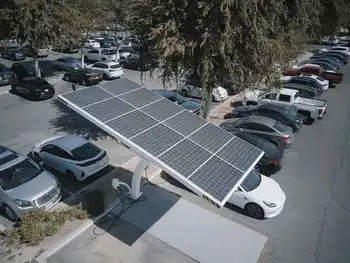Generating station coming Halton Hills
By Georgetown Independent & Free Press
Substation Relay Protection Training
Our customized live online or in‑person group training can be delivered to your staff at your location.

- Live Online
- 12 hours Instructor-led
- Group Training Available
The OPA recently announced it had signed a 20-year contract with TransCanada for the 683-megawatt Halton Hills Generating Station (HHGS) to be built on an 80-acre parcel of land at the southwest corner of Sixth Line S. and Steeles Ave.
"The need for new generation to serve customers located primarily in Halton Region and the City of Mississauga has been identified for some time," said an OPA spokesperson in a news release. "For example, demand in the Milton and Halton Hills areas is expected to increase an average of 6-10 per cent a year, well above the provincial average."
In July, the OPA issued a Request for Proposals for the supply of a new natural gas-fired generating facility with a capacity between 500 and 600 MW.
TransCanada's proposal was one of four submitted - and considered to be the most competitive. The other proposals were for plants in Milton and north Oakville.
The Town of Halton Hills had given its stamp of approval to the $670 million plant in September, which earned TransCanada extra points in the selection process.
At that time only Ward 2 Councillor Bryan Lewis did not support the proposal for the facility because he didn't believe it met the criteria for prestige industrial-- the designation that applies to most of the land in the corridor.
"It's something the Town supported," said Halton Hills Mayor Rick Bonnette Thursday. "They (TransCanada) will be engaged in a full environmental assessment under provincial legislation and we believe that will ensure high standards are set."
Bonnette also said the company has agreed to participate in the Town's planning approval and construction regulation process.
He said benefits include the fact the company has agreed to replace the Town in the Halton Hills 401 Corridor Landowner's Agreement assuming the Town's $1.5 million loan repayment to Halton Region and to provide a $250,000 investment for future community projects. He added the generating plant also means cost savings for Halton Hills Hydro and annual assessment for the Town of between $1 and $1.3 million.
Milton councillor Rick Day, who had concerns about the environmental impacts of all four of the proposed generating stations, is critical of Halton Hills council for supporting the TransCanada project.
"If they took money to allow these people to pollute, then shame on them," said Day, who represents urban and rural east Milton residents who live south of the 401, many not far from the Halton Hills plant.
"I think that was smart business on the part of the Town," countered Bonnette. "We may have got this whether council supported this application or not, but at least we had our ducks in a row ahead of time. I think Mr. Day is just trying to fear monger, as he did during his re-election quest."
Day intends, however, to ask for a "bump up" of the environmental assessment process TransCanada must go through for the Halton Hills plant so "its site specific and much more thorough."
"Halton Hills has skipped all those safeguards," said Day.
He also will request Milton's planners and lawyers review the Halton Hills zoning bylaw and the council procedure followed to make the decision to endorse the plant.
Bonnette stressed that environmental watchdog group POWER supported the TransCanada proposal and that environmental standards are set by the province.
Hal Kvisle, TransCanada's chief executive officer said they are "delighted to begin work on another major power project in Ontario."
"HHGS is a strong fit with TransCanada's power strategy and it demonstrates our continued commitment to helping address Ontario's power needs. Ontario is one of the largest power markets in North America and as a long-time participant in the Ontario energy market through both our pipelines and energy businesses, we know the market well."
Kvisle said the Halton Hills plant will bring greater stability to the local electricity supply and the generating station is expected to create up to 300 construction jobs. Approximately 24 full-time positions will be required to operate the facility, which will include two combustion turbine generators.
TransCanada is hoping to begin construction next year.











